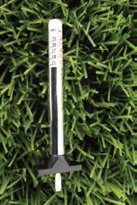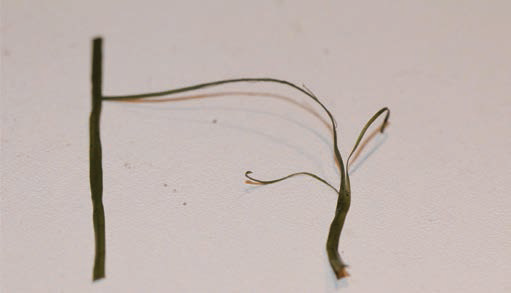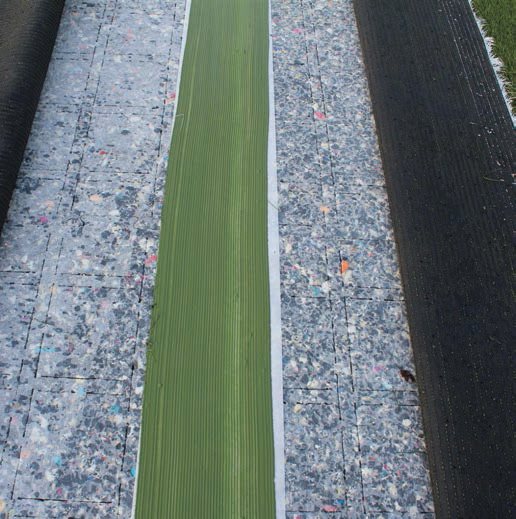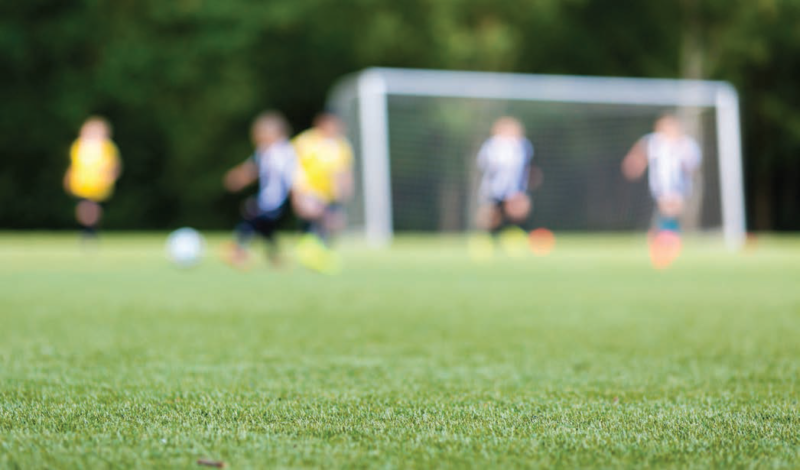Eamon Kealy, turfgrass specialist and lecturer in horticulture at the Institute of Technology Blanchardstown, details how return on investment in artificial playing surfaces can be maximised through simple care and maintenance
Two decades ago it was a rare sight to see an ‘astroturf’ pitch in rural Ireland. Today artificial surfaces are big business with every town and village has at least one, thanks to both the GAA and the government’s capital sports programme. Artificial sports surfaces provide clubs with more training space, consistent playing surfaces and availability throughout the year that natural turf cannot compete with. Additionally, artificial surfaces allow natural turf to be rested at important times of the year while still providing space for training sessions.
Artificial surfaces have come a long way since their first inception as short pile carpets that did little for games like soccer and Gaelic football. Today’s modern artificial surfaces comprise of long pile carpets (65mm) with sand and rubber crumb infill designed to reproduce the conditions of natural turf. They have been accepted (maybe not loved) by players of all standards and are definitely here to stay in some shape or form.
SAFETY
Many organisations and companies have been at the forefront of developing and publishing standards for ensuring safer surfaces. Prior to opening a new pitch, the surface will often have been tested to conform to the governing bodies standards e.g. FIFA one star or two stars, FIH or the GAA’s Code of Compliance. This ensures that the surface is safe within the recommended parameters. As the surface ages, its performance degrades and in some instances can become dangerous. Annual independent testing can highlight areas needing additional maintenance. At present, there is no compulsory annual testing programme for sports surfaces in Ireland. A pitch can be tested on day one and never be tested again before it is ultimately replaced. This may change in the future.
In early 2015, Niall Yorke, a fourth-year horticulture student at the Institute of Technology Blanchardstown, carried out testing of both natural and artificial surfaces as part of his final year project. His findings showed that surface hardness increased with the age of 3G artificial surfaces. Ball roll and ball rebound also increased beyond the recommended parameters. No real surprise, however in one instance of an eight-year-old artificial pitch, the surface hardness readings (Clegg hammer) measured nearly fi ve times that of the nearby natural turf pitch (273g vs 60g). Maintaining a safe surface requires keeping the infi ll clean and mobile. Once the performance infi ll (rubber crumb) becomes compacted and contaminated it must be addressed to keep the surface safe for players.
Jerry Tynan, a former laboratory technician and developer of the Bioclean pitch system, tested artificial surfaces throughout Ireland throughout 2010. E. coli, MRSA, Weil’s disease and numerous other dangerous bacteria and fungi were found in high levels on many surfaces. When maintaining pitches Jerry uses an ATP meter before and after treatment to measure the levels of bacteria and applies a Bioclean treatment every 90 days to prevent a potentially dangerous build-up.
MANAGING YOUR INFILL
When maintaining 3G surfaces, the stabilisation (silica sand) and performance infill (rubber crumb) is key to the satisfactory performance of the surface. Purchase a simple tyre depth gauge for measuring the depth of sand and rubber crumb. Dedicated more expensive infill depth testers are available but not necessary. Use on a regular basis to measure the depth of infill and identify areas requiring topping up. On average the weight of the artificial carpet for a 3G pitch will be 2.6kg/m2 (this can vary dependent on pile density) with the sand infill being applied at 26kg/m2 and rubber crumb at 14kg/m2 (total of 40g/m2 of sand and rubber). A full-size artificial GAA pitch (including runoff areas 14,250m2) will require in the region of 360 tonnes of silica sand and 200 tonnes of rubber crumb if constructed correctly. There are massive cost savings for contractors who apply less material than specified or sands of inferior quality. Should this be the case the life of the pitch will be shortened and possibly the safety of the surface will be compromised.
Develop a maintenance plan based on the usage of the pitch. It is recommended that a ratio of 10:1 should be adopted. For example, for every 10 hours of play on the surface, an hour’s maintenance should be carried out. This may include litter picking, grooming, brushing and topping up infill levels. All these simple tasks will help to extend the life of your club’s investment.



NEW BUILDS
Constructing a new artificial turf pitch can be daunting and expensive. Employing a competent design team and a skilled and experienced contractor can take the hardship out of the process. Ensure that your club really needs an artificial surface before committing excessive resources to the project. Remember, the returns from artificial surface rental are not the same as they were 10 years ago as consumers have more options to choose from. Don’t rely on rental income to fund the maintenance programme. Such revenue may dry up when the surface needs it most, coming to the end of its usable life.
SELECTING AND WORKING WITH AN ARTIFICIAL TURF CONTRACTOR
Consider the following:
Before selecting a contractor
● Does the contractor have experience in the type of project that you are constructing? For example, do they specialise in 3G pitches rather than hockey pitches construction? How many years has the company been in business?
● Will they be responsible for the complete project or just the carpet and infill?
● Get references from design companies, testing companies and directly from clubs who have used their services.
● Visit completed projects and talk to the owners, managers and users of the pitches.
● What is the company’s existing workload and can they handle the project within a reasonable timeframe?
● Would they be in a position to purchase a construction bond to cover them for the length of the build?
● What is the company’s safety record?
● What will be the Project Supervisor Design Process (PSDP) and the Project Supervisor Construction Stage (PSCS)?
● Have they priced the bill of quantities as per the specification?
● Are there any pre-qualifications in their returned tender submission?
● Have they altered the bill of quantities in any way to return the lowest bid?
● Make the contractor specify the amount and type of sand and rubber crumb per m2.
● Is the contractor willing to supply the client with the specific particle size distribution for materials to be used in the subbase and base?
● Will the manufacturer/contractor provide a warranty for the surface and associated works? If so what does it cover? For how long? And what conditions (if any) are associated with the warranty?
● Ensure the contractor supplies all laboratory test reports showing the surface and infill comply to the regulations of the governing body.
After the construction is completed –
● Independently test the surface upon completion. Do not include this in the tender.
● Request ‘as built’ drawings for all drainage pipes including depths and falls.
● Randomly measure the amount and type of sand and rubber crumb per m2.
● Check that the seams have been either glued or stitched correctly.
● Establish a sinking fund that will enable the pitch to be replaced within eight years if necessary. ✽




  |










